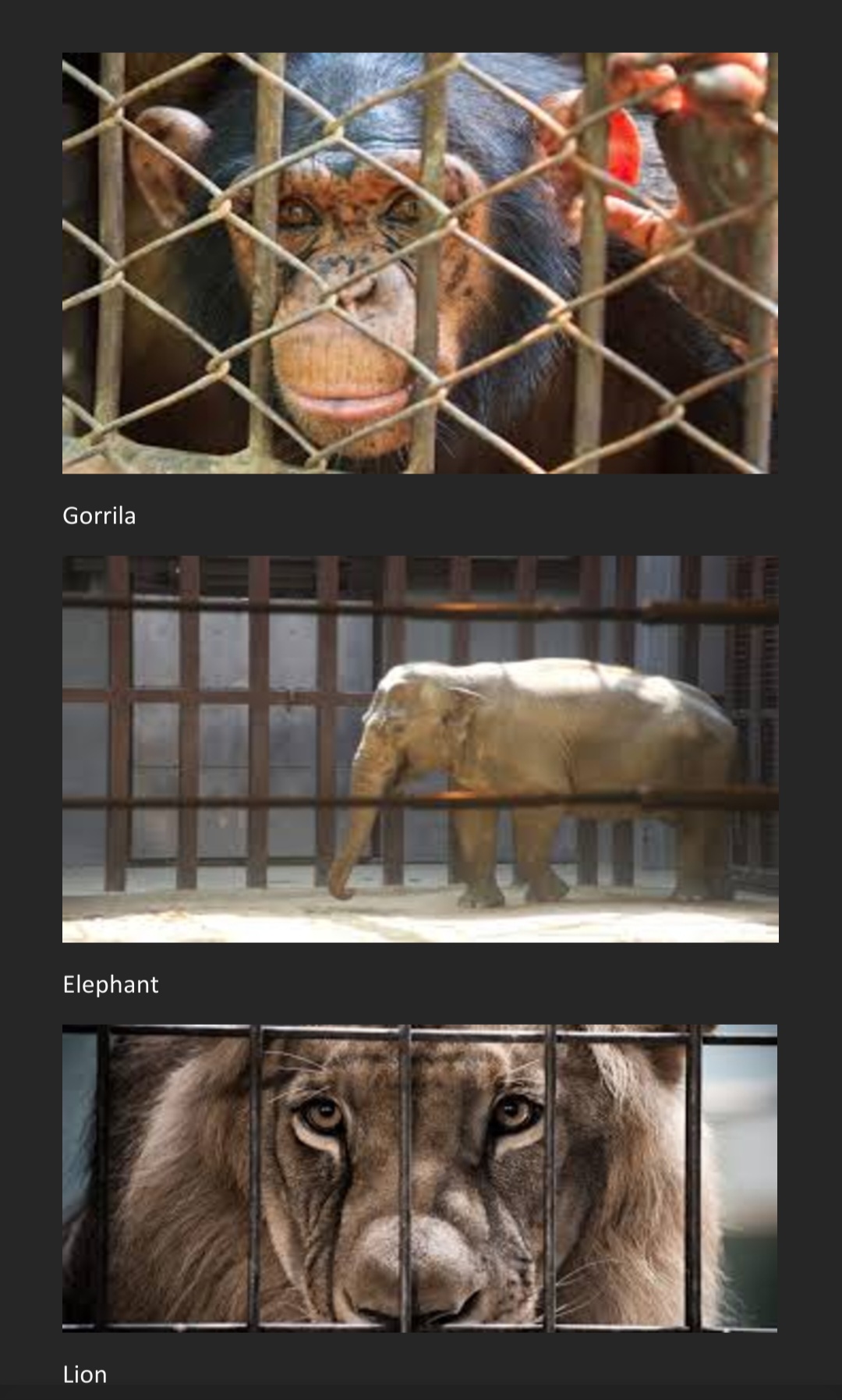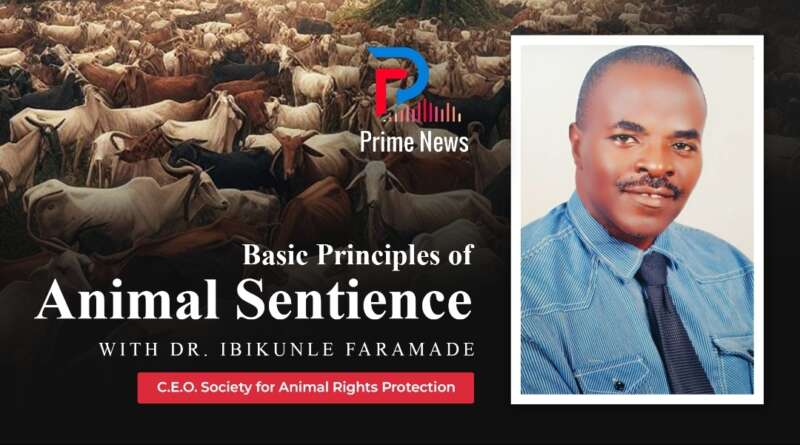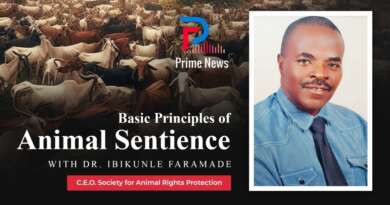Welfare Concerns for Captive Wild Animals
By Dr. Ibikunle Faramade
Captive animals are animals that are removed from their natural habitats forcefully and are kept in artificial enclosures or are born into captivity (which is rare in some species) to serve some predetermined purposes. They have lost their abilities to fend or protect themselves from danger etc. Their responsibilities and survival wholly rest on humans who have held them captive in one way or the order. Captive animals may not be necessarily wild. Domestic animals may also be held captive (e.g. farmed animals). Therefore, captive animals may include those kept in the zoological gardens (e.g. lion, tiger, jackal etc.), animal rescue or rehabilitation centres, exotic pets such as parrots, primates, farmed animals such as alligators, ostriches, working animals such as elephants (used in logging) etc. For the purpose of this article, captive wild animals would be kept in perspective.
The life of wild animals held in captivity can never be the same with that of their family members living in their natural habitat. Their lives have been disrupted as a result of many stressors that the new environment has imposed on them. Some of the stressors on wild animals include:
- Lack of sensory stimuli that are important to the species, e.g. particular light–dark cycles, sounds, smells, etc.
- Restrictions in movement.
- Feeding and other behavioural opportunities, so that the species’ most typical behavioural adaptations cannot be expressed
- Abnormal social groups and lack of areas to retreat to
- Forced proximity to humans: this is a particular concern in zoos, circuses and exotic pets kept in homes
- Too little environmental control: in impoverished environments animals do not have the stimuli or substrates to make decisions and enact choices. This impacts negatively on the ability of the animal to adapt to the new environment.
 It is the recognition of these stressors that makes the application of the five freedoms relevant captive animals. They are as follows:
It is the recognition of these stressors that makes the application of the five freedoms relevant captive animals. They are as follows:
- Freedom from hunger and thirst
Animals held in captivity should have unhindered access to food and water. The food or feed should be relevant to the species. The manner of presentation should simulate what occur in the wild (natural habitat). The form of presentation should reflect what obtains in the wild, so that the captive animal could easily adapt to the new environment. The same thing apply to the provision of adequate drinking water all the time (ad libitum). Feeding points should be many if more than one animal of the same species are housed together in recognition of peck order in order to prevent unhealthy competition and associated social tension amongb the animals.
- Freedom from Discomfort (provision of good environment)
Captive animals should be kept in facilities that guarantees freedom of movement in a manner that is similar to what obtains in the wild. For example, bats cannot be raised successfully in cages. Bat sanctuaries should be created through the planting of trees etc. Monkeys cannot be raised in captivity without environmental enrichments that could make the animals feel at home. Monkeys are highly athletic, jumping, climbing etc. Cognizance should therefore be taken of the peculiarities of the animals that are being kept in captivity so that boredom and other incompatible conditions would not lead to the untimely death of such animals after a prolong period of inability to cope with the realities of the imposed artificial environment. The height, length and breadth of animals held in cages should reflect the size of the animals. Sharp edges should be completely avoided in order to prevent injury and pain that may result albeit, unintentionally. In addition, the construction of artificial habitats for wild animals should put maintenance of hygiene into consideration. This is very germane to prevent the spread of diseases that could endanger the animals and humans. Captive animals should also be protected from the vagaries of weather conditions in conformity with the requirement of the species.
- Freedom from Diseases
Captive animals are entitled to full veterinary care and attention. Every holding facility for captive animals should retain the services of veterinarians. The health condition of captive animals require close observation and intervention. Living in captivity as earlier mentioned has imposed a great stress on the animals. Stress is a major factor that predispose animals to immunosuppression, which usually open the flood gate of infection. Therefore, the services of veterinarians should be retained in order for diseases to be nipped in the bud, so as not to expose the animals to unnecessary suffering and eventual death.
- Freedom to express normal behaviour
Although there is no way an artificial environment can perfectly match natural environment, efforts should be geared, as much as possible towards ensuring near perfect simulation of natural habitat that could enhance the expression of normal behaviour in captive animals. The housing, as previously explained should accommodate peculiar behaviour of each animal species. Animals that are known to enjoy solitude should not be housed together in groups. Conversely, animals whose social behaviour is gregarious in nature should not be housed in solitude. Provision of hunting, foraging, flying opportunities etc. promotes improved livability of captive animals.
- Freedom from Fear and Distress
Captive animals should be free from fear and distress. Animals could be subjected to untold hardship of fear and distress through the location of the captivity (e.g. zoological garden) too close to areas of intense human activities. Hooting of vehicles could cause hysteria and psychological torture for animals. Handlers of captive animals should be trained and retrained in the art of caring for animals in captivity. Training of animals should be associated with rewards not punishment etc. The nature of housing could impose distress on captive animals if social order among animals is not respected. Animals with unsettled battle for territorial command are likely to be a source of anxiety and fear for others. So, this possibilities should be anticipated and addressed early.
In conclusion, the value of environmental enrichment in ameliorating the conditions of animals cannot be overemphasized. Enrichments are necessary in order to get the best response and value from captive animals. Adequate budgetary provisions in terms of personnel, appropriate housing, adequate feed/food, water etc. should be made to guarantee the welfare of the animals, even, before they are procured.
Dr. Ibikunle Faramade is a veterinary pathologist, sustainable development practitioner, animal welfare advocate and a lecturer at the Federal College of Animal Health & Production Technology, Apata. Ibadan. He’s the C.E.O of the Society for Animal Rights Protection, a non-profit and a non-governmental organization dedicated to the promotion of animal welfare, animal rights and prevention of cruelty to animals. animalrightsprotection2020@gmail.com , +2348028305284




